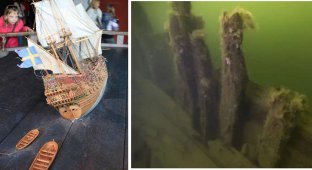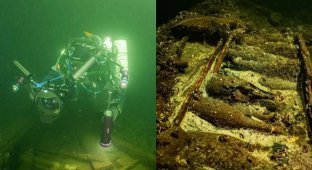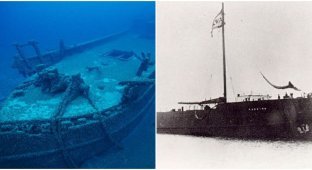A 1,700-year-old Roman ship was discovered off the coast of Mallorca (5 photos)
Just two meters beneath the turquoise waters of Playa de Palma, a Roman merchant ship that sank approximately 1,700 years ago has been discovered. The Ses Fontanelles ship, located off one of Mallorca's most popular beaches, offers a unique insight into the world of late Roman trade, shipbuilding, and everyday life in the Western Mediterranean. 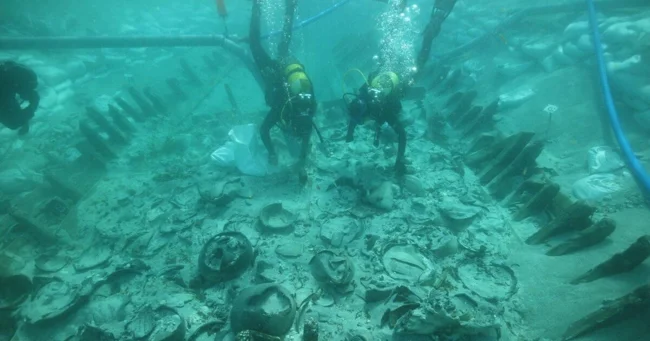
Local resident Felix Alarcón first spotted the ship and reported it to the Office for the Protection of Cultural Heritage. Experts soon confirmed that the 12-meter vessel, containing hundreds of amphorae, dates to around the mid-4th century AD.
Archaeologists believe the ship departed from Cartagena, a major Roman port in southern Spain, with a cargo of olive oil, wine, and garum—a fermented fish sauce. A coin minted in Siscia (modern-day Croatia) around 320 AD, found under the mast, helped to precisely date the find. 
According to Professor Enrique García of the University of the Balearic Islands, the vessel is in excellent condition. It quickly became covered in sand after sinking, isolating it from oxygen and preventing decomposition. Dozens of amphorae remain sealed, and the hull and deck retain their structure.
Among the finds were two leather shoes, a carpenter's drill, possibly used for onboard repairs, and an oil lamp depicting the goddess Diana, a symbol of the hunt and the moon. Early Christian monograms were found on some of the amphorae, indicating a transitional period when pagan and Christian beliefs coexisted in the late Roman world. 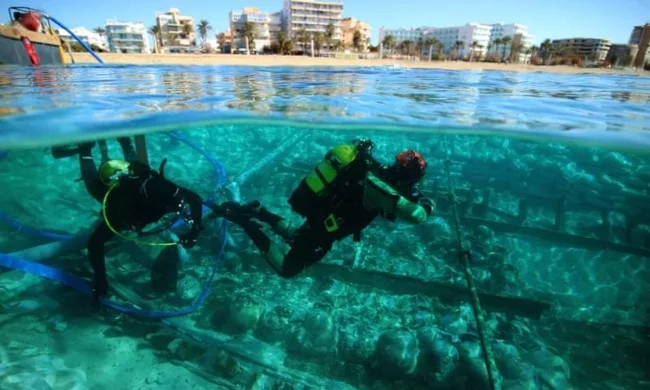
The cargo turned out to be a veritable treasure trove of epigraphic finds. The amphorae were adorned with inscriptions detailing their producers, contents, and tax collections. Researchers from the University of Cadiz, led by Professor Dario Bernal, have called this collection one of the largest ever discovered in Spain.
"These inscriptions reveal complex administrative and commercial networks that helped support Roman trade," Bernal noted.
Laboratory analysis confirmed that the clay used for the amphorae came from southeastern Spain. This proves that Murcia was an important center for the production of oil and fish sauce in late antiquity. Experts also discovered five previously unknown types of amphorae. 
Shipwrecks from the late Roman Empire are rare. Most earlier vessels either collapsed or were discovered long before systematic conservation studies began. Ses Fontanelles offers a unique time capsule, enabling us to study shipbuilding technologies, trade logistics, and the daily lives of sailors who sailed between Iberia, North Africa, and the Balearic Islands.
The discovery also reveals Mallorca's rich Roman past. In 123 BC, the island was conquered by Quintus Caecilius Metellus Balearicus, who transformed it into a strategic base in the western Mediterranean. In the 4th century, the Playa de Palma area was a harbor, providing shelter for ships during storms. It is possible that this shelter was what the doomed merchant ship sought before sinking. 
The wooden parts of the ship remain in place, covered in sand. Amphorae and other artifacts have been sent for conservation. Dr. Carlos de Juan of the University of Valencia reported that plans are currently underway to gradually restore the hull. This is due to the ship's keel being damaged during storms.
After recovery, each wooden fragment will be cleaned of salt and rust in freshwater tanks at Castillo San Carlos in Palma de Mallorca. They will then be impregnated and stabilized. The restoration and conservation process is expected to take at least five years. Once completed, the vessel will become part of Mallorca's maritime heritage and will be open to the public.













